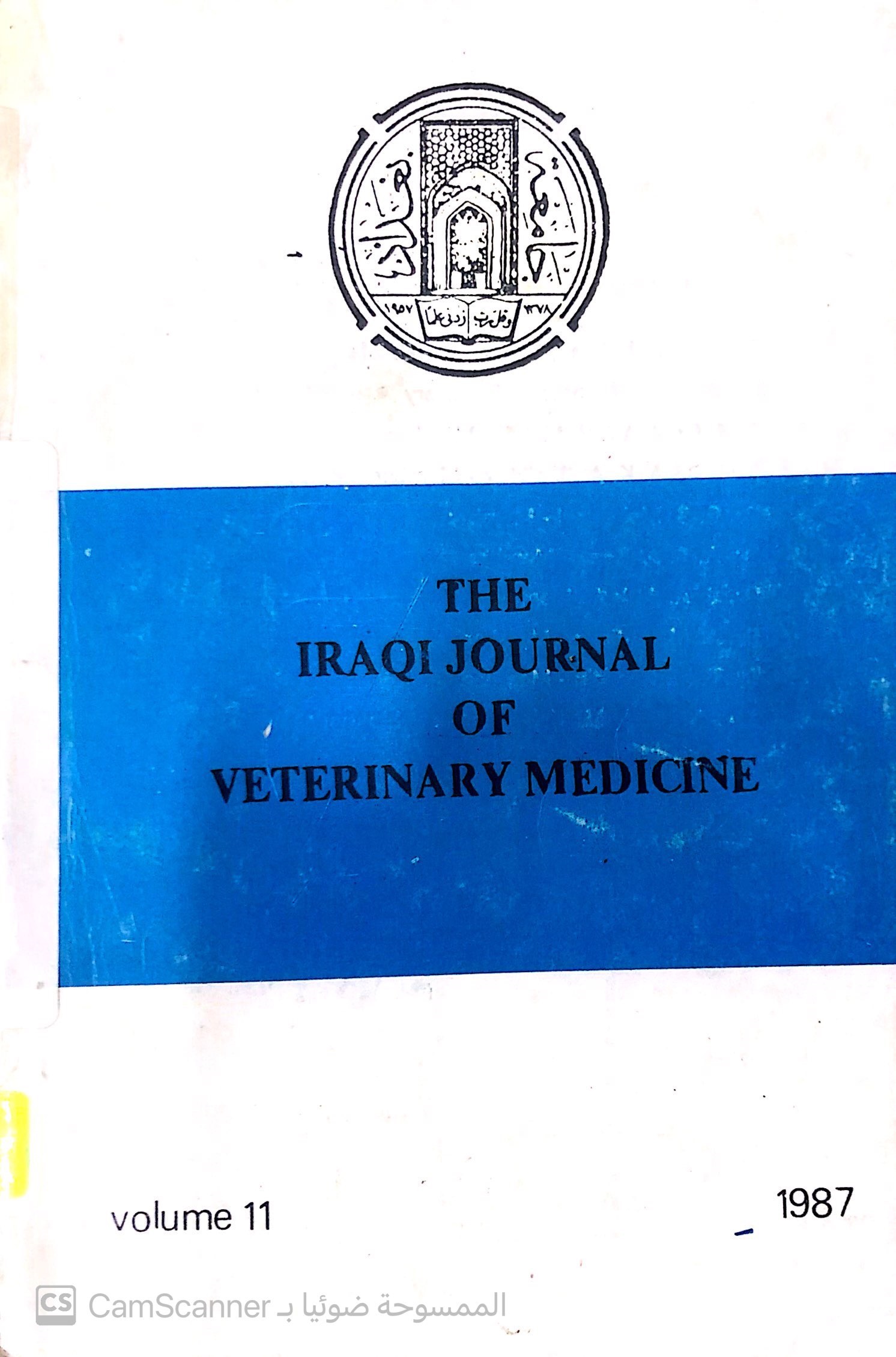IDENTIFICATION AND PATHOLOGY OF STRONGYLUS SPECIES IN NATURALLY INFECTED MULES.
Main Article Content
Abstract
Naturally infected large intestine of 16 mules were collected during one year period. All three species of Strongylus were identified: S.vulgaris, S.equinus and S.edentatus. Specimens were processed for standard histological examination. The effect of the parasite on the wall of the intestine ‘included the _ surface epithelium, glandular tissue, muscularis mucosa and part of the submucosa. Changes on the intestinal wall were observed at the site of the parasitic attachement, which included oedema, cellular infilteration with congestion and haemorrhages.
Downloads
Article Details
Section
How to Cite
Publication Dates
References
Cromoton, D.W.T. (1973). The site. occupied by some parasitic helminth in the alimentary tract of vertebrates. Biol. Rev. 48, 27-83.
Duncan, J.L.. (1974). Field studies on the epidemiology of mixed strongyle infection in horses. Vet. Rec. 49, 337-339.
Duncan, J.L. (1975). Immunity to Strongylus vulgaris in the horse. Equine Vet. J. 7, 192-197.
Dunn, A.M. (1978). Veterinary Helminthology. Second edition, pp. 212-215, Willam Heinemann Medical Books Ltd, London, Great Britian.
Foster, A.O. (1937). A relationship in the equines between age of host and number of strongylid philadelphia.
Greatorex, J.C. (1975). Diarrhoea in horse associated with ulceration of the colon and the caecum resulting from Strongylus vulgaris larval migration. vet. Rec. 97, 221-225.
Luna, L.G. (1968). Manual of Histologic staining method of the Armed Forces Institute of Pathology. Third edition, McGraw-Hill Book Co., New York.
Leiper, J.W.G. (1957). Animal parasites and their control. Report to the Government of Iraq. No. 610, FAO, Rome.
Ogbourne, c.P. (1976). The prevalence, relative abundances and site distribution of nematodes of the subfamily Cyanthostominae in horses killed in Britain. J. Helminth. 50, 213-214.
Reinemeyer, C.R.; Smith, S.A.; Gabel, A.A. and Herd, R.P. (1984). The prevalence and intensity of internal parasites of horses at necropsy in the USA, Vet. Parasit. 15, 75-83.
Skerman, K.D. and Hillard, J.J. (1966). A handbook for studies of helminth parasite of ruminants FAO.
Slocombe , J.O.D. and McGraw, B.M. (1973). Gastrointestinal nematodes in horses in Ontario, Can. Vet. J. 14, 101-105.





